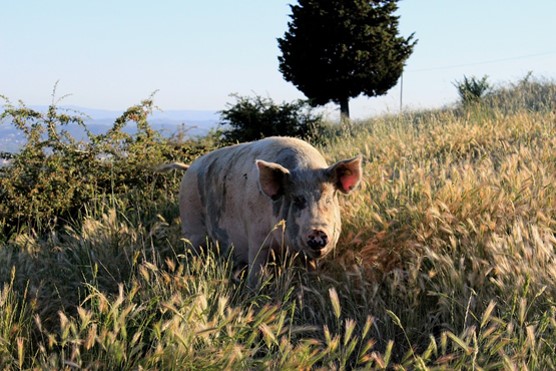



Performance response of piglets to acid-preserved, high-moisture wheat
The Prairie Swine Centre releases new trial results: Determining the effectiveness of feeding acid-preserved, high moisture wheat as an alternative to directly supplementing acid to the wheat diet of weanling pigsPigs do not secrete sufficient amounts of hydrochloric acid (HCl) in their stomachs at the time of weaning to effectively digest protein and maintain gut health. Previous decades of research have established that adding acid to the feed of weanling pigs will lower pigs’ gastric pH and so increase their digestive efficiency and health. For instance, pigs’ stomach acid provides a barrier to pathogenic microorganisms, since low pH conditions control those populations. And acid can also improve the digestion of protein, and other nutrients. Typically, when weanling pig diets are supplemented with dietary acids to enhance digestion, piglet growth rates increase by 6 to 12% (Tung and Pettigrew, 2006).

Wheat is one of the main cereals used as an energy source in pig feed in Canada. Source: Max Pixel
Wheat, one of the main cereals used on the Canadian Prairies as an energy source in pig feed, is typically harvested at <15% moisture to maintain its quality during storage. However, when environmental challenges to farming result in high moisture, low quality wheat crops, producers often resort to drying grain artificially or storage in oxygen limiting silos. But these processes can jeopardise nutrient value and increase producers’ costs for fuel, power and specialised drying structures. As an alternative, high moisture, low quality wheat can be preserved by acidification for use as piglet feed, which simultaneously can improve weanling digestive growth and health.
Whether the benefits of diet acidification are maintained when piglets are fed acid-preserved high-moisture wheat is not known and requires further investigation. Therefore a nursery feeding trial was conducted to evaluate the efficacy of feeding acid-preserved, high moisture wheat as an alternative to in-feed acidification.
One objective of this trial was to determine the effectiveness of feeding acid-preserved, high moisture wheat as an alternative to directly supplementing acid to the wheat diet of weanling pigs. Acidification of wheat with propionic acid resulted in a significant improvement in feed efficiency (G:F) in pigs on days 8 to 21 after weaning, regardless of the method of application. This improvement occurred by contrast to the non-acid control and to diets containing phosphoric acid. So feeding acid-preserved wheat using propionic acid (APW-Prop) had comparable performance with pigs fed acidified diets using propionic acid (AD-Prop).









